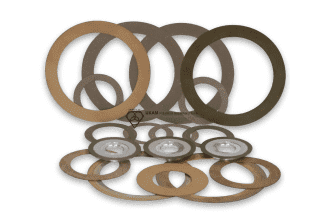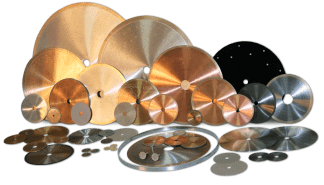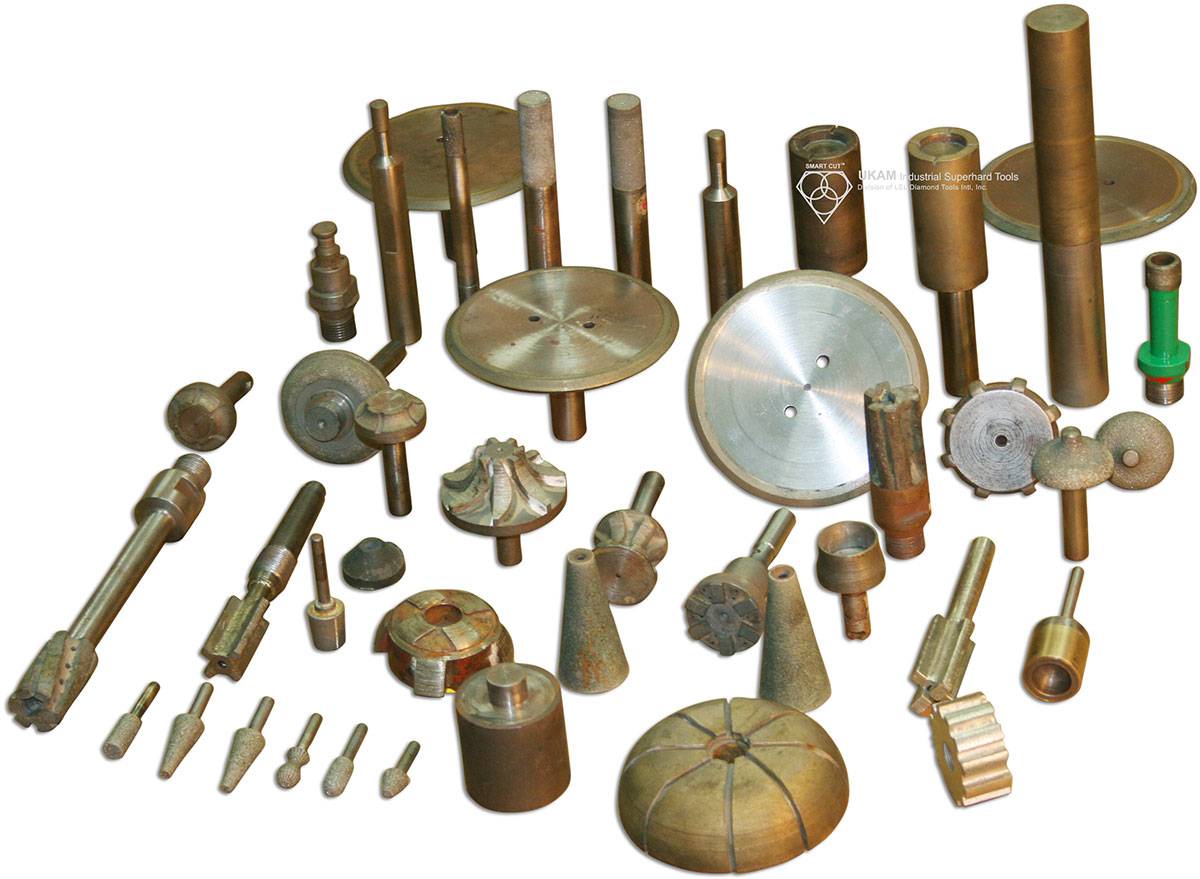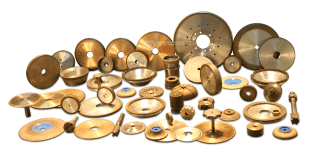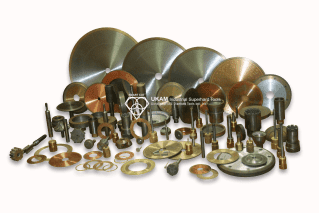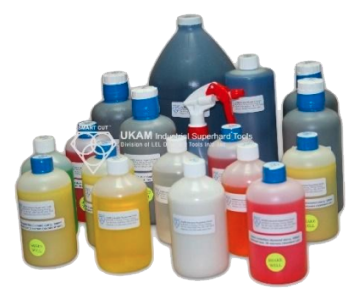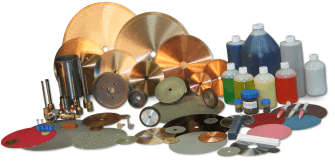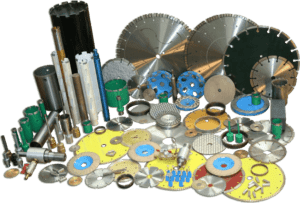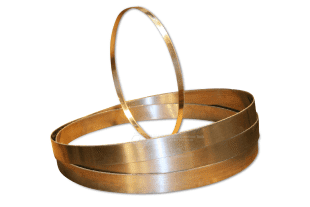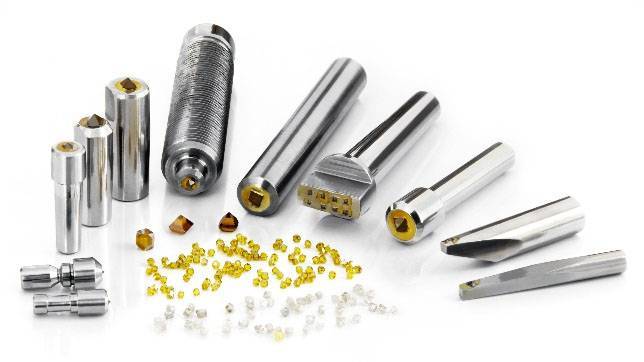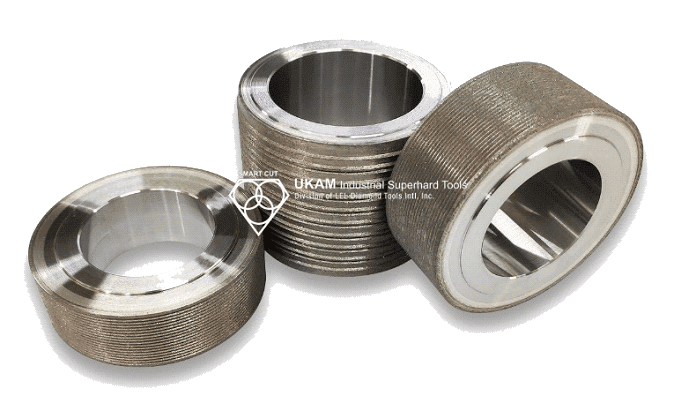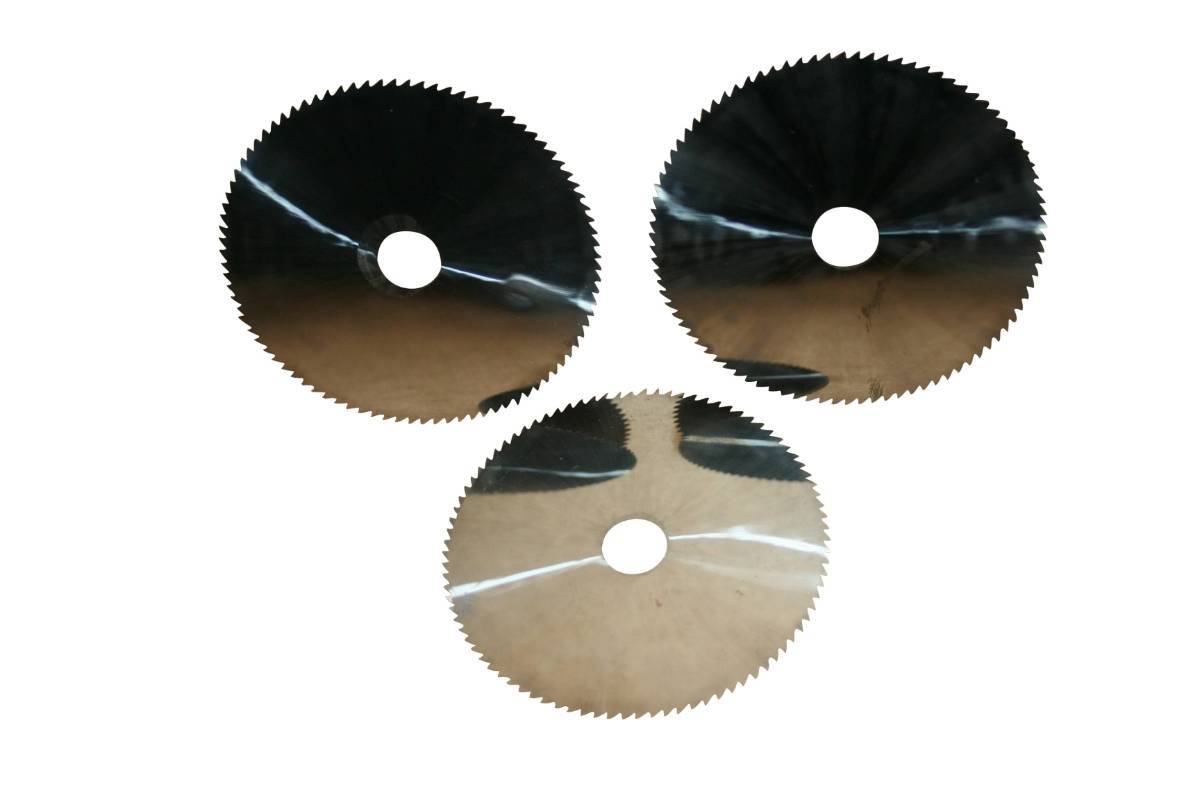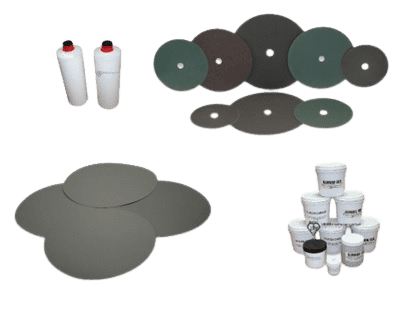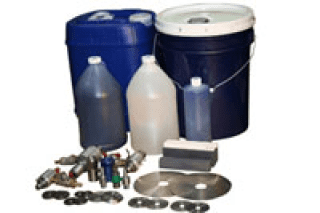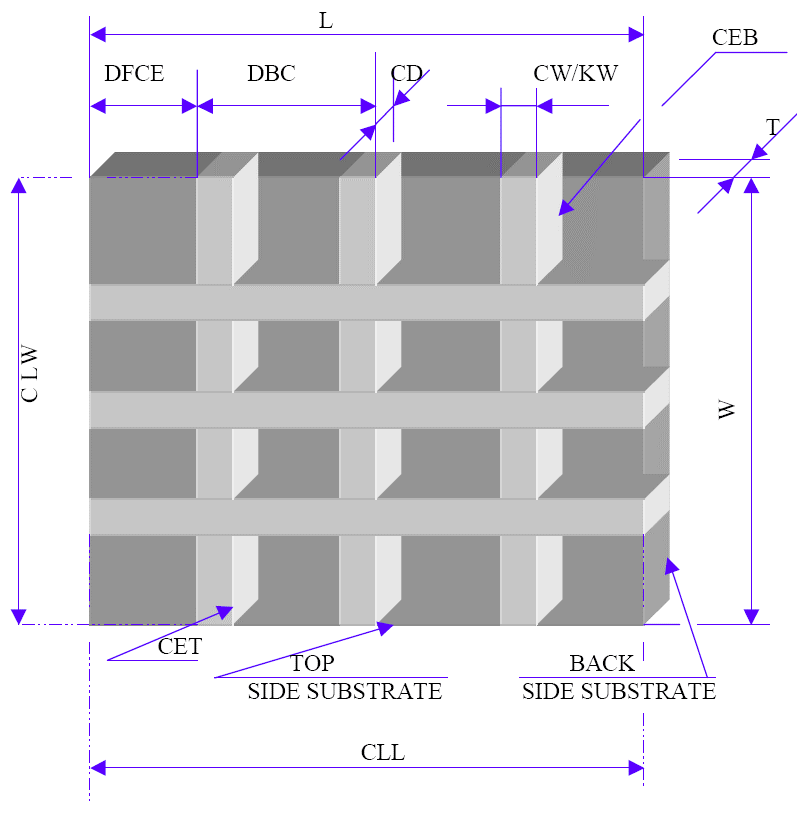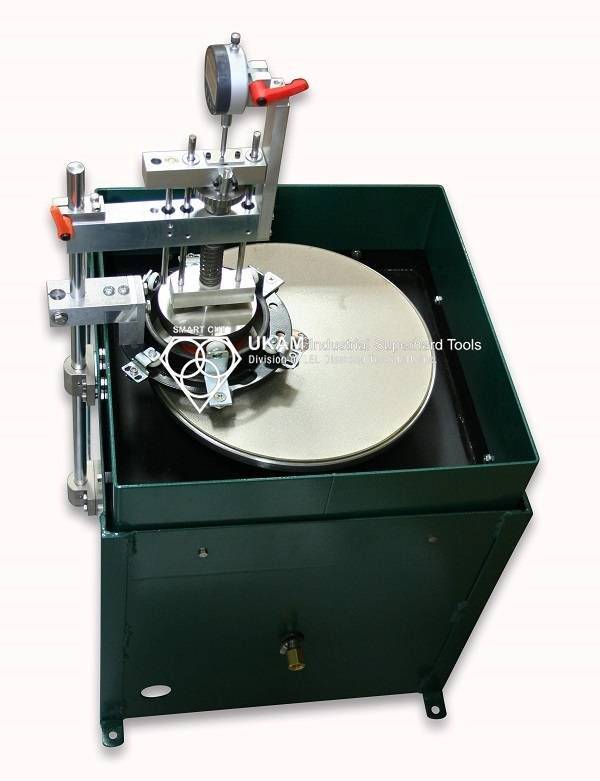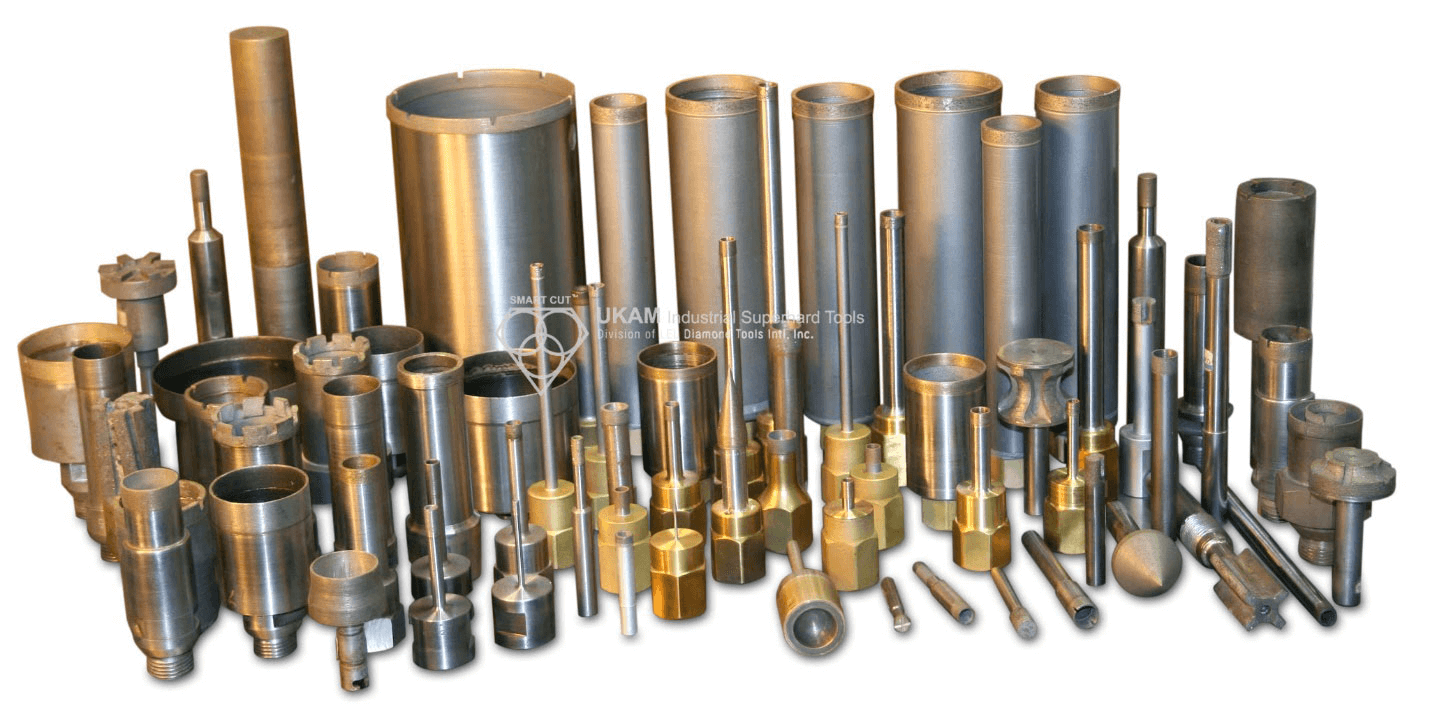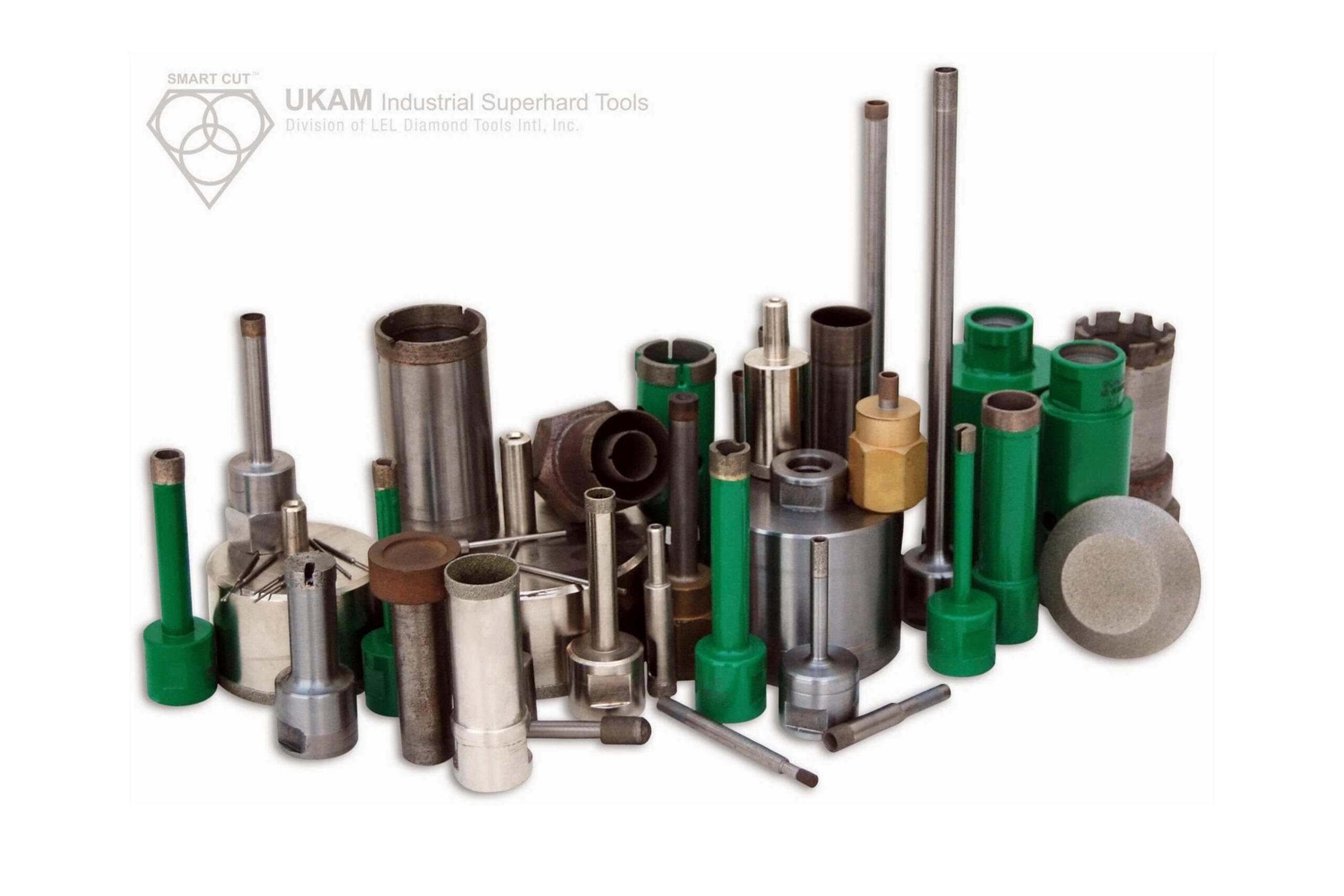Understanding & Calculating Return on Investment for Diamond Core Drills & Other Tools
-
Posted by
contactor6

The term "ROI" (Return On Investment) is widely used across industries, often interpreted differently depending on the context. However, few truly understand what ROI represents and its specific implications, particularly in the context of diamond core drills. Additionally, accurately calculating ROI is often overlooked. Yet, ROI is one of the most fundamental and critical metrics when evaluating and comparing diamond core drills.
Share this Article with Friend or Colleague
ROI is not just about selecting the most optimized diamond core drill or tool for your needs; it also involves optimizing all drilling parameters and processes to achieve the best possible results.
Understanding and calculating ROI is essential for making informed, cost-effective decisions. While high-quality diamond core drills may have a higher initial cost, their durability, performance, and efficiency often lead to substantial long-term savings. Evaluating ROI reveals financial benefits such as increased productivity, reduced waste, and lower maintenance costs.
High-quality diamond core drills and similar tools enhance productivity through faster drilling speeds and greater efficiency.


Drilling Speed
The drilling speed of a diamond core drill is a crucial factor in determining the overall productivity of drilling operations, making it a key consideration in calculating the return on investment (ROI) for these tools. A diamond core drills ability to maintain high drilling speeds directly influences how efficiently materials are processed, reducing downtime and maximizing throughput. This not only accelerates task completion but also enhances the cost-effectiveness of the operation.
Diamond core drills and related tools are evaluated based on their capability to sustain high drilling speeds without slowing down ensures that materials are drilled swiftly and consistently, reducing the need for frequent maintenance or tool replacement. This continuity allows for uninterrupted drilling operations, leading to higher output and better resource utilization. Consequently, the operation experiences fewer delays, resulting in more completed tasks within the same timeframe.
The advanced technology behind diamond core drills, including optimized bond formulations and superior material composition, plays a significant role in sustaining these high drilling speeds. High-grade diamond crystals embedded in a carefully designed bond matrix ensure that the drill remains sharp and effective throughout its use. This design continuously exposes fresh cutting edges, allowing the drill to maintain high speeds even as it wears down, further contributing to efficient material removal.
The relationship between drilling speed and ROI is clear: faster drilling speeds lead to more efficient operations, reducing labor costs and increasing the number of completed projects.
As the tool maintains its high performance over time, the cost per hole decreases, resulting in a more favorable ROI. Thus, drilling speed is not just a measure of a tool’s performance but a critical factor in maximizing the economic benefits of using diamond core drills and similar tools. By enabling quicker and more efficient drilling, these tools contribute significantly to long-term gains in productivity and cost savings.
Speed-Related Savings ($) = (Reduction in Operation Time) × (Labor Cost per Hour)
Here is a graph showing the relationship between speed-related savings and the reduction in operation time for a diamond core drill, with varying labor costs per hour. The different lines represent labor costs ranging from $20 to $70 per hour, illustrating how savings increase as operation time is reduced
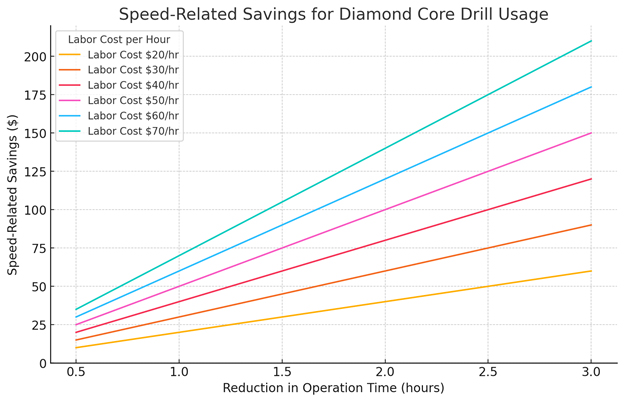

Required Force
The amount of force needed to penetrate material during drilling operations is an important indicator of a diamond core drill's efficiency. Superior core drills are designed to drill through materials with minimal force, showcasing their advanced engineering and the high-quality materials used in their design and construction. This efficiency not only improves the drilling process but also significantly impacts productivity, which directly influences the return on investment (ROI) for these tools.
In drilling operations, the force required to penetrate various materials is affected by factors such as the hardness and structural characteristics of the material. High-quality diamond core drills are engineered to optimize this drilling force, ensuring that even the hardest materials can be drilled with minimal effort. This optimization is essential for maintaining the integrity of the material being drilled and for maximizing the tool's efficiency and lifespan.
Diamond core drills that require less force to penetrate reduce the mechanical stress on both the material and the drilling equipment. This reduction in stress preserves the quality of the material and decreases wear and tear on the drill, resulting in a longer tool life and fewer replacements. This durability leads to a lower cost per hole, which is a critical factor in calculating ROI.
At the same time, diamond core drills that operate efficiently with lower force enable faster drilling speeds, further improving productivity. By minimizing the force needed, these drills allow operators to work more quickly and with greater precision, leading to higher output in less time. The combination of reduced downtime, extended tool life, and faster drilling translates to substantial cost savings, making these drills a smart investment.
Using core drills that require minimal drilling force also offers ergonomic benefits for operators, reducing physical strain and the risk of accidents. This not only improves safety but also allows operators to maintain high levels of focus and accuracy over extended periods, contributing to consistent, high-quality results.
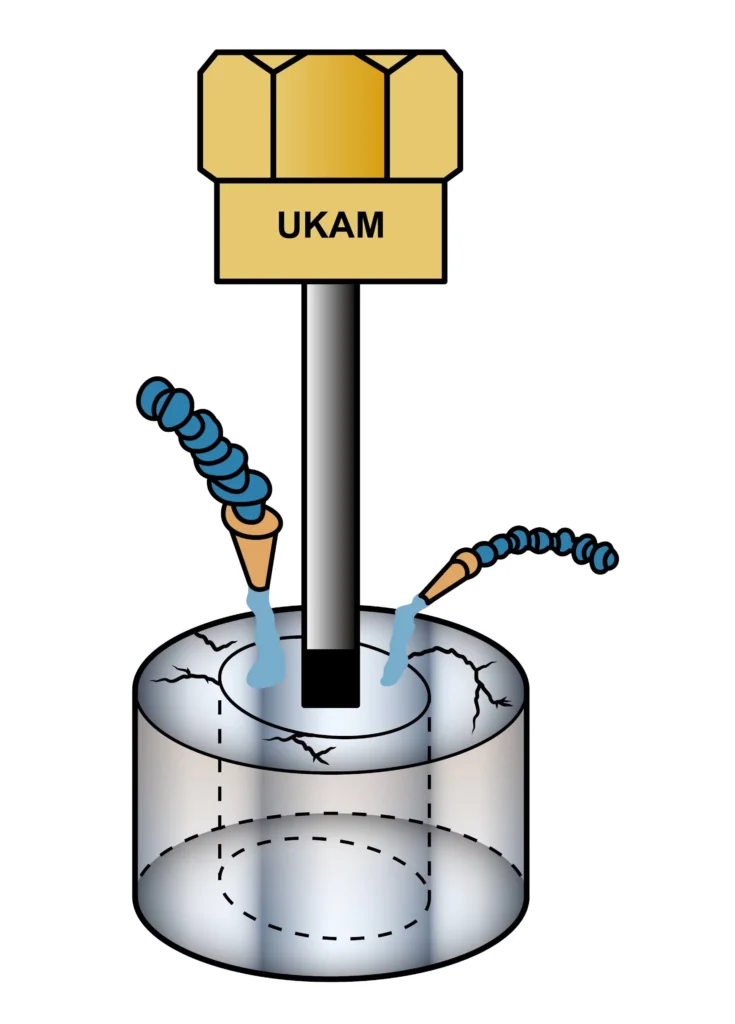
Force-Related Savings ($) = (Energy Cost Savings) + (Maintenance Cost Reduction)
This graph illustrates the force-related savings for diamond core drill usage. The total force-related savings are a combination of energy cost savings and maintenance cost reduction. The light green area represents the energy cost savings, while the light blue area shows the maintenance cost reduction. The line shows the total savings as the energy cost savings increase.

Dressing Frequency
The frequency with which a diamond core drill or similar tool requires dressing has a significant impact on productivity and is a crucial factor in calculating return on investment (ROI). Dressing restores the diamond drills cutting surface by removing worn material and exposing fresh diamond crystals, which is essential for maintaining optimal drilling performance. However, frequent dressing can indicate inefficiencies that disrupt workflow and increase costs.
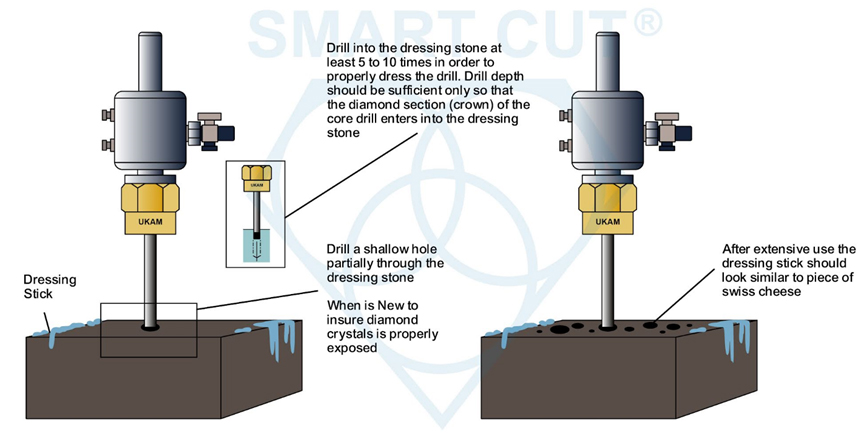
All diamond core drills and similar tools have to be dressed sooner or later, its just a matter of time. Diamond core drills that require less frequent dressing maintain their drilling efficiency longer, reducing downtime and enabling continuous operation. This boosts productivity by allowing more material to be processed without interruptions. Fewer dressing cycles also mean lower maintenance costs, less wear on the drill, and reduced overall operating expenses, leading to a lower cost per hole and directly improving ROI.
Consistent drilling performance with less frequent dressing contributes to a stable production process, minimizing variability and ensuring high-quality results. By reducing maintenance needs and extending the tool's life, high-quality diamond core drills enhance productivity and cost-effectiveness, resulting in a stronger return on investment.
Dressing Frequency Savings ($) = (Reduction in Dressing Operations) × (Cost per Dressing)
Here is the updated graph starting from 1 minute (or less) of time saved for dressing frequency savings in diamond core drill usage. The x-axis now begins with smaller increments of time saved, and the corresponding savings in dollars are plotted on the y-axis. Each line reflects a different cost per dressing, illustrating how even small reductions in time can lead to cost savings.
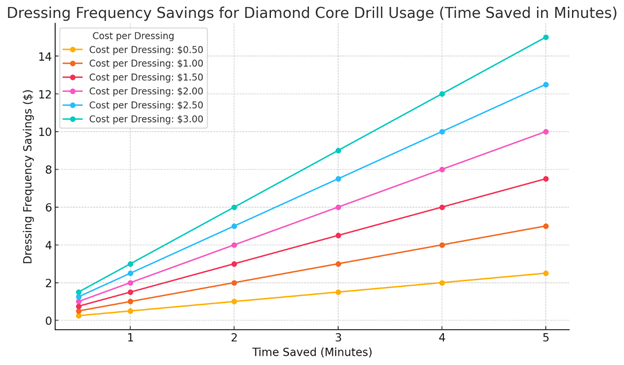
Material Compatibility
The level of how compatible a specific diamond core drill or related tool is to the material being worked on is a key feature of superior tools, directly influencing their versatility and efficiency in various drilling applications. These tools are meticulously engineered to perform effectively across a wide range of materials, from the hardest metals to more delicate composites, demonstrating a level of performance that exceeds more specialized drills. The ability of a tool to transition seamlessly between different material types without frequent adjustments or drill changes highlights the advanced technology and thoughtful design behind diamond core drills. This versatility streamlines workflows and significantly enhances operational efficiency.


The development of versatile diamond core drills involves rigorous testing across a broad spectrum of materials, ensuring that they can handle the unique challenges presented by different materials, such as varying hardness, abrasiveness, and thermal sensitivity. By fine-tuning factors like diamond grit size, bond hardness, and drill geometry, these tools are optimized to deliver consistent performance across diverse materials.
This adaptability not only simplifies operations by reducing the need for multiple specialized tools but also contributes to cost savings and improved productivity. The ability to use a single drill for various materials without sacrificing performance ensures a more streamlined and efficient drilling process, ultimately leading to a better return on investment (ROI). The versatility of high-quality diamond core drills, therefore, plays a crucial role in maximizing operational flexibility and economic benefits across different drilling scenarios.
Cut Quality / Chipping Level
The quality of the surface, especially the smoothness of the edges, is a critical measure of a diamond core drill's performance. Superior diamond core drills are known for their ability to produce minimum or no chipping at entrance and exit of the hole, significantly enhancing both the precision and surface finish of the drilled material. This high level of cut quality not only improves the material's aesthetic appeal but also streamlines the fabrication process by reducing or even eliminating the need for secondary finishing operations.
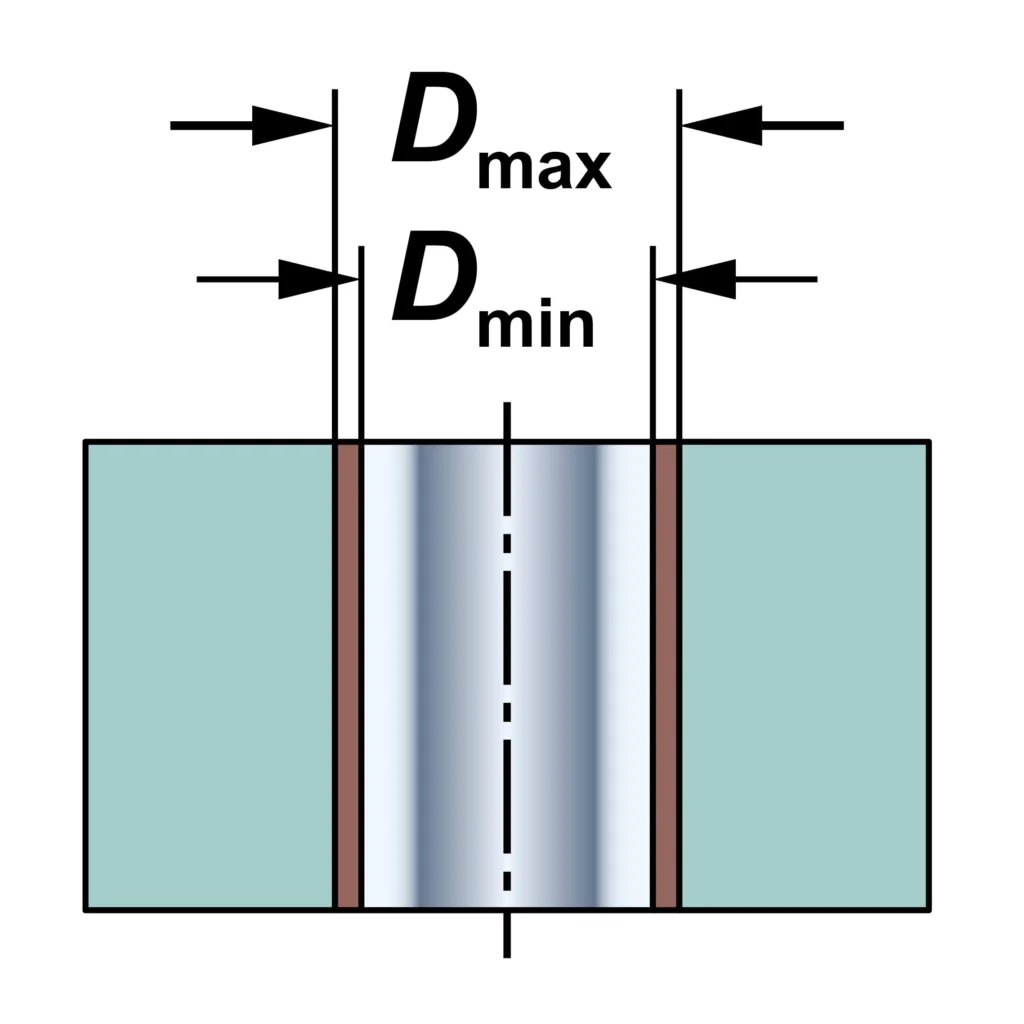

Achieving a clean, chip-free hole quality is essential for maintaining the integrity of the material and ensuring that it meets the required specifications from the very first drill. This capability is particularly important when working with materials where edge quality directly affects the final product's performance or appearance. By minimizing chipping and other defects, these drills reduce waste and the need for rework, leading to greater efficiency in the drilling process.
In terms of productivity and return on investment (ROI), the ability to produce high-quality, chip-free holes translates to significant cost savings. Less time spent on secondary finishing operations means more time devoted to drilling, thereby increasing overall throughput. Additionally, reducing material waste and ensuring that each hole meets the necessary standards on the first attempt lowers the overall cost per piece, thereby enhancing ROI.
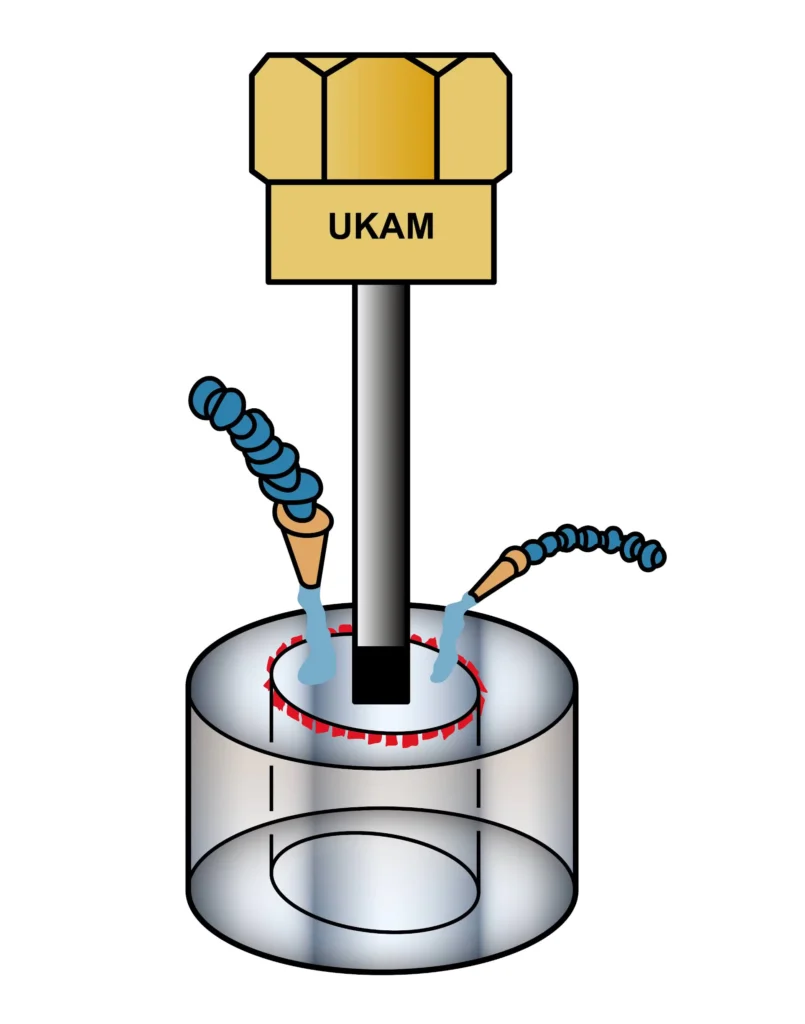
High-quality diamond core drills that consistently deliver superior cut quality contribute to a more efficient, cost-effective drilling process, ultimately leading to better economic outcomes for your operations.
Quality-Related Savings ($) = (Reduction in Rework or Scrap) × (Material Cost per Unit)
Here is a graph illustrating quality-related savings for diamond core drill usage based on the reduction in rework or scrap. The x-axis represents the number of units saved, while the y-axis shows the corresponding savings in dollars. Each line reflects different material costs per unit, demonstrating how reducing rework or scrap can lead to significant savings, especially as the material cost per unit increases.
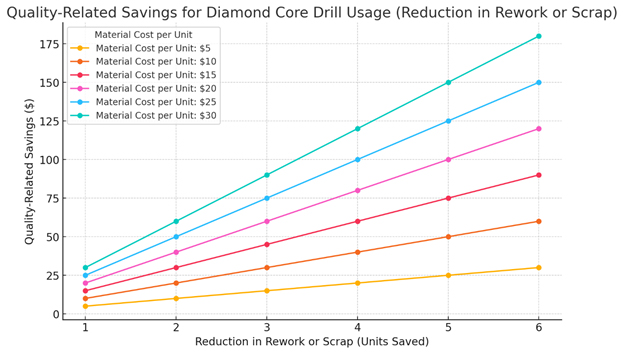

Durability and Longevity
Durability and longevity are critical attributes that define the overall value and effectiveness of a diamond core drill or similar tool. These qualities extend beyond mere resistance to physical wear; they encompass the tool's ability to maintain drilling precision, speed, and efficiency over an extended period of use. Superior diamond core drills are engineered to endure the demands of extensive drilling operations without significant degradation, making them not only cost-effective but also reliable for delivering consistent, high-quality performance.
The longevity of these tools is the result of advanced materials, rigorous research and development, and precision engineering.
High-quality diamond crystals, combined with optimized bond formulations, ensure that the drill remains sharp and efficient even after prolonged use. This resistance to wear and tear reduces the frequency of drill replacements, leading to lower maintenance costs and less downtime, both of which are essential for enhancing productivity.
Longevity has a direct impact on return on investment (ROI) by extending the operational life of the drill. A tool that lasts longer while maintaining its performance reduces the overall cost per hole, making each drilling operation more economically efficient. Fewer replacements and less frequent maintenance translate into higher uptime and sustained productivity, which in turn leads to greater profitability.
Durability-Related Savings ($) = (Extended Lifespan Savings) / (Average Lifespan Increase)
Here is a graph illustrating durability-related savings for diamond core drill usage, based on the extended lifespan savings and average lifespan increase. The x-axis represents the percentage increase in lifespan, while the y-axis shows the corresponding durability-related savings in dollars. Each line reflects different extended lifespan savings, highlighting how increased durability can reduce costs over time.
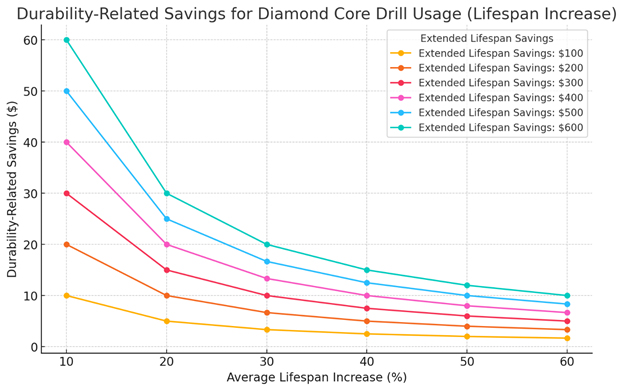
Wear Resistance
Wear resistance is a crucial attribute that directly influences the longevity and cost-effectiveness of a diamond core drill or similar tool. A tool that can withstand the demands of intensive use without significant degradation in its drilling capabilities ensures consistent performance and delivers greater value over its lifespan. High-quality diamond core drills are distinguished by their ability to retain their cutting edge and diameter over extended periods, demonstrating resilience against the wear and tear that typically accompanies demanding drilling tasks.
The wear resistance of these tools is primarily determined by the advanced technology and bond matrix composition used in their design. High-grade, synthetic diamond crystals, optimized for toughness and thermal resistance, ensure that the cutting edges remain sharp and effective through repeated use. The bond matrix plays a crucial role as well; it must be durable enough to keep the abrasive crystals exposed while wearing down at a rate that continuously reveals new, sharp edges. Achieving this balance involves sophisticated material formulations and precise manufacturing processes that extend the tool's drilling life.

In terms of productivity and return on investment (ROI), superior wear resistance translates directly into a longer drill life and fewer replacements. This reduces overall operating costs by minimizing downtime for drill changes and maintaining consistent drilling performance throughout the tool’s life. The extended durability allows operators to complete more work with fewer interruptions, increasing throughput and efficiency.
Ultimately, the wear resistance of a diamond core drill enhances productivity and improves ROI by ensuring that the tool delivers reliable, long-lasting performance, even in the most demanding applications. This makes these tools a cost-effective investment, providing sustained value over time.
Consistency in Performance
Consistency in performance is a hallmark of an exceptional diamond core drill setting it apart from others in the field. The ability to deliver uniform results across a wide range of materials is what truly distinguishes a high-quality drill. Achieving this consistency requires the right bond formulation, appropriate bond hardness, and the optimal diamond type. These factors ensure that the abrasive particles are evenly exposed throughout the bond matrix, providing consistent drilling performance every time the tool makes contact with the material.

This uniform distribution of diamonds within the drill is crucial for maintaining a steady drilling speed, which in turn supports precision and efficiency with each pass. A tool that consistently performs well not only enhances productivity by reducing the need for adjustments or rework but also improves the overall quality of the drilled hole, ensuring that each operation meets the desired standards.
High-quality diamond core drills also offer freer drilling capabilities, reducing resistance when penetrating various materials. This not only extends the tool's lifespan by minimizing wear but also ensures that the hole quality remains high, even with extended use. The reduced resistance and consistent performance allow operators to work more efficiently, completing tasks faster and with greater accuracy.
In terms of productivity and return on investment (ROI), consistency in performance translates to fewer interruptions, less downtime for adjustments, and more reliable results. This means more work can be completed in less time, lowering the overall cost per operation and enhancing the tool's value. By delivering dependable, high-quality performance across a range of materials, these drills ensure that drilling operations remain efficient and cost-effective, making them a smart investment for any application.
Consistency Savings ($) = (Reduction in Quality Variability Costs)
Here is a graph illustrating durability-related savings for diamond core drill usage, based on the extended lifespan savings and average lifespan increase. The x-axis represents the percentage increase in lifespan, while the y-axis shows the corresponding durability-related savings in dollars. Each line reflects different extended lifespan savings, highlighting how increased durability can reduce costs over time.
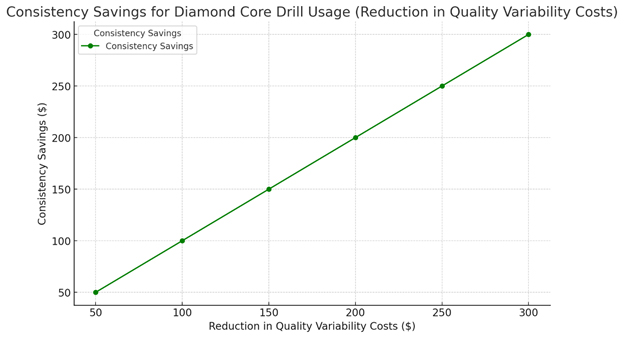
Higher Accuracy & Precision in Drilling (Run-Out and Tolerances)
The accuracy and precision of a diamond core drill, particularly regarding run-out and tolerances on the outside or inside diameter, are crucial indicators of its performance and construction quality. A drill that consistently produces accurate and precise holes demonstrates exceptional engineering and meticulous attention to tolerances. This precision is essential for high-quality drilling, especially in applications where even minor deviations can lead to significant issues.

Run-Out refers to the degree of deviation from a perfect rotation of the drill, which can impact the straightness and roundness of the drilled hole. Minimal run-out ensures that the drill maintains a consistent path, resulting in precise and straight holes. A well-engineered drill with tight tolerances on both the outside and inside diameters reduces the likelihood of wobble or deviation, which is critical for achieving high levels of accuracy.
The design and balance of a diamond core drill play a vital role in maintaining minimal run-out. Even distribution of diamond particles within the tool ensures that the drill wears evenly, preventing any imbalance that could lead to deviations. Additionally, the stiffness of the drill is crucial; a rigid drill resists bending and maintains its path, while effective vibration control further prevents any unwanted deviations.
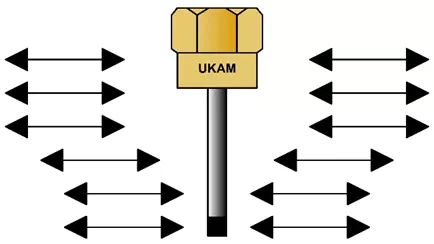
Achieving precise, straight holes consistently reduces the need for rework, saving both time and material, which directly impacts productivity and return on investment (ROI). By ensuring consistent accuracy and minimal run-out, high-quality diamond core drills enhance operational efficiency and deliver better ROI, making them a smart choice for precision drilling tasks.
How to Calculate Return on Investment (ROI) for Diamond Core Drills
Calculating the Return on Investment (ROI) for diamond and cubic boron nitride (CBN) blades involves evaluating both the costs and benefits associated with using these high-quality cutting tools. Here's a step-by-step guide on how to calculate ROI:
1. Identify the Initial Investment
Calculate the total initial costs involved in acquiring the diamond core drills. This includes the purchase price of the drills and any additional expenses such as shipping, installation, and training required for operation.
Initial Investment ($) = Cost of Diamond Drills + Associated Costs
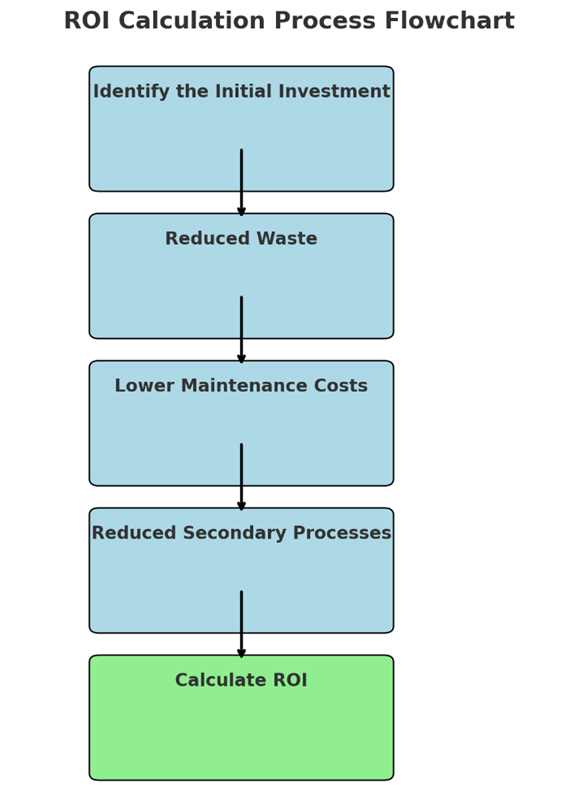
|
Cost Description |
Cost (USD) |
|---|---|
|
Primary Diamond Drills |
$150.00 |
|
Spare Drills |
$150.00 |
|
Machine Setup Cost |
$25.00 |
|
Training Costs |
$75.00 |
|
Maintenance Tools/Accessories |
$40.00 |
|
Shipping Costs |
$14.00 |
|
Energy Power Consumption Setup |
$10.00 |
Total Initial Investment: $464.00
2. Calculate Operational Savings
|
Category |
Description |
Equation |
|---|---|---|
|
Reduced Waste |
Estimate the savings derived from reduced material waste due to the precision and efficiency of the diamond core drills. |
Waste Reduction Savings = (Reduced Waste Volume) × (Cost per Unit of Material) |
|
Lower Maintenance Costs |
Calculate savings from fewer maintenance requirements and less frequent replacement of drills. |
Maintenance Savings = (Reduction in Maintenance Hours) × (Cost per Hour) + (Fewer Drills Purchased) × (Cost of Each Drill) |
|
Reduced Secondary Processes |
Evaluate savings from decreased need for secondary processes like finishing or polishing due to better initial drilling results. |
Secondary Process Savings = (Reduction in Secondary Process Hours) × (Cost per Hour) |
|
Energy Efficiency and Speed |
Assess savings resulting from higher cutting speeds and lower energy consumption. |
Speed and Energy Savings = (Reduction in Operation Time) × (Labor Cost per Hour) + (Energy Consumption Difference) × (Energy Cost per Unit) |
|
Performance Enhancements |
Quantify savings from enhanced durability and wear resistance that extend the life of the drills and reduce dressing frequency. |
Durability and Wear Savings = (Extended Lifespan Savings) / (Average Lifespan Increase) + (Reduction in Replacement Parts) × (Cost per Part) |
|
Quality and Precision Improvements |
Calculate the financial benefits of improved cut quality and precision, which may include reduced rework and higher product pricing. |
Quality and Precision Savings = (Increase in Revenue from Higher Quality Products) + (Reduction in Rework or Scrap) × (Material Cost per Unit) |
|
Speed-Related Savings |
Savings achieved by reducing operation time through faster drilling, which lowers labor costs. |
Speed-Related Savings = (Reduction in Operation Time) × (Labor Cost per Hour) |
|
Force-Related Savings |
Savings from using less force during drilling, which leads to reduced energy consumption and lower maintenance needs. |
Force-Related Savings = (Energy Cost Savings) + (Maintenance Cost Reduction) |
|
Dressing Frequency Savings |
Savings from reduced need to dress the drills, decreasing the frequency and cost of this maintenance operation. |
Dressing Frequency Savings = (Reduction in Dressing Operations) × (Cost per Dressing) |
|
Quality-Related Savings |
Financial benefits from improved drilling quality, reducing the amount of rework or waste material. |
Quality-Related Savings = (Reduction in Rework or Scrap) × (Material Cost per Unit) |
|
Durability-Related Savings |
Savings from the extended lifespan of the drills, which decrease the frequency of drill replacements. |
Durability-Related Savings = (Extended Lifespan Savings) / (Average Lifespan Increase) |
|
Consistency Savings |
Savings from consistent performance that reduces variability in quality, leading to lower costs associated with quality control and non-compliance. |
Consistency Savings = (Reduction in Quality Variability Costs) |
Here’s how to calculate the Operational Savings for drilling a 3" deep hole in sapphire using a 1/4" diameter diamond core drill using sintered (metal bond) standard wall diamond core drill with two slots with water swivel adapter to run coolant through center of the drill

1. Reduced Waste
Description: Savings from reduced material waste due to precision and efficiency.
Equation: Waste Reduction Savings = (Reduced Waste Volume) × (Cost per Unit of Material)
Example:
Reduced Waste Volume = 0.1 cubic inches
Cost per Unit of Material (sapphire) = $100 per cubic inch
Waste Reduction Savings = 0.1 × 100 = $10
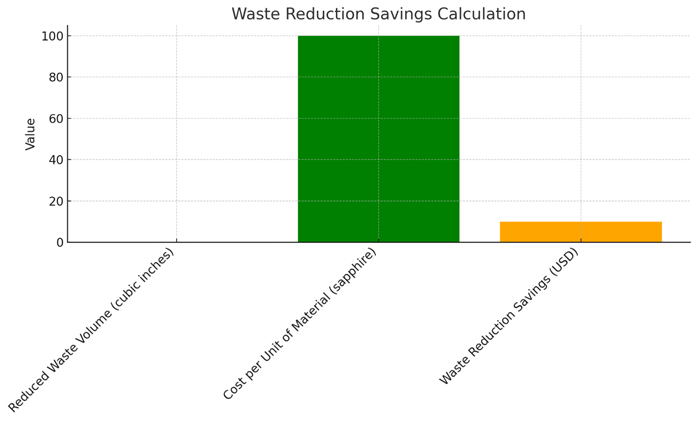
The Chart displays the Waste Reduction Volume, the Cost per Unit of Material, and the Waste Reduction Savings in USD based on the provided example.
2. Lower Maintenance Costs
Description: Savings from fewer maintenance requirements and less frequent drill replacements.
Equation: Maintenance Savings = (Reduction in Maintenance Hours) × (Cost per Hour) + (Fewer Drills Purchased) × (Cost of Each Drill
Example:
Reduction in Maintenance Hours = 2 hours
Cost per Hour = $50
Fewer Drills Purchased = 1
Cost of Each Drill = $125
Maintenance Savings = (2×50) + (1×125) = $100 + $125 = $225.00
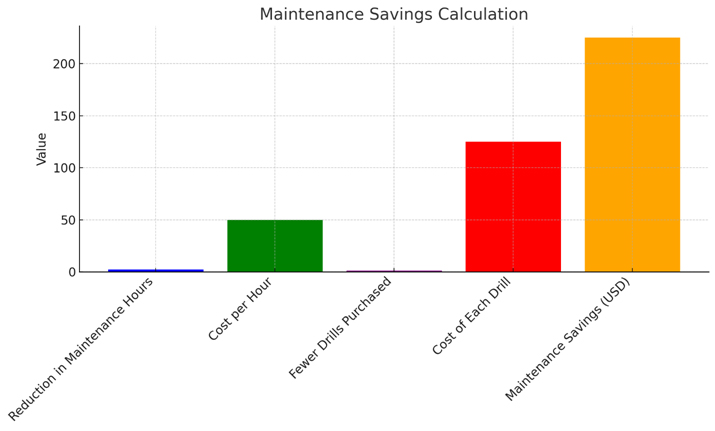
Chart representing the Maintenance Savings calculation. The chart shows the reduction in maintenance hours, the cost per hour, fewer drills purchased, the cost of each drill, and the resulting maintenance savings in USD based on the provided example.
3. Reduced Secondary Processes
Description: Savings from reduced need for finishing/polishing.
Equation: Secondary Process Savings = (Reduction in Secondary Process Hours) × (Cost per Hour)
Example:
Reduction in Secondary Process Hours = 1 hour
Cost per Hour = $40
Secondary Process Savings=1 × 40 = $40
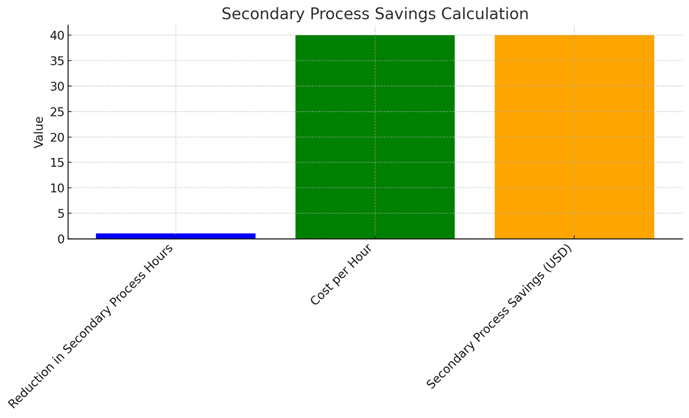
Here is the chart representing the Secondary Process Savings calculation. It shows the reduction in secondary process hours, the cost per hour, and the resulting savings in USD.
4. Energy Efficiency and Speed
Description: Savings from faster speeds and lower energy consumption.
Equation: Speed and Energy Savings = (Reduction in Operation Time) × (Labor Cost per Hour) + (Energy Consumption Difference) × (Energy Cost per Unit)
Example:
Reduction in Operation Time = 6 minutes = 0.1 hours
Labor Cost per Hour = $50
Energy Consumption Difference = 2 kWh
Energy Cost per Unit = $0.10 per kWh
Speed and Energy Savings = (0.1 × 50) + (2 × 0.10) = $5 + $0.20 = $5.20
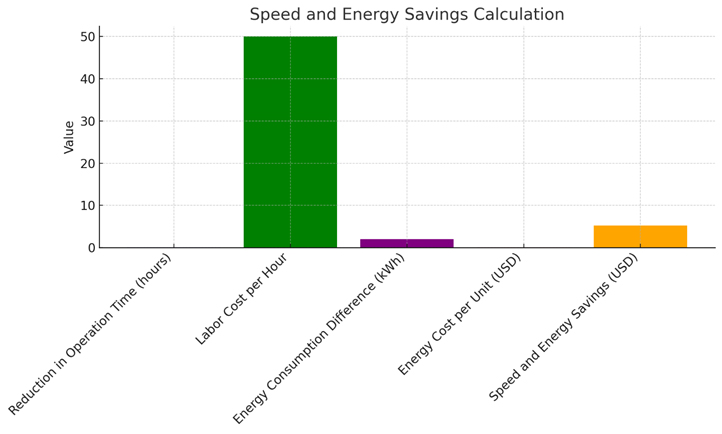
Here is the chart representing the Speed and Energy Savings calculation. It displays the reduction in operation time, labor cost per hour, energy consumption difference, energy cost per unit, and the resulting speed and energy savings in USD
5. Performance Enhancements
Description: Savings from extended drill life and reduced replacement parts.
Equation: Durability and Wear Savings = (Extended Lifespan Savings) / (Average Lifespan Increase) + (Reduction in Replacement Parts) × (Cost per Part)
Example:
Extended Lifespan Savings = $100
Average Lifespan Increase = 20%
Reduction in Replacement Parts = 2 parts
Cost per Part = $50
Durability and Wear Savings = (100 / 0.2) + (2 × 50) = $500 + $100 = $600
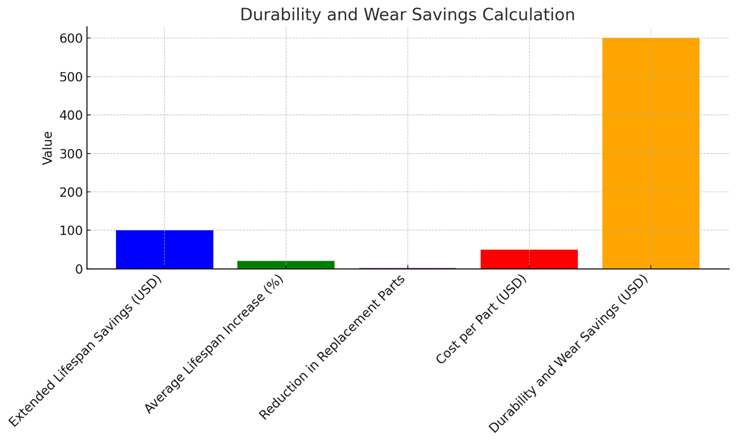
Here is the chart representing the Durability and Wear Savings calculation. The chart includes the extended lifespan savings, average lifespan increase percentage, reduction in replacement parts, cost per part, and the resulting durability and wear savings in USD
6. Quality and Precision Improvements
Description: Savings from reduced rework and higher product pricing.
Equation: Quality and Precision Savings = (Increase in Revenue from Higher Quality Products) + (Reduction in Rework or Scrap) × (Material Cost per Unit)
Example: Increase in Revenue = $50
Reduction in Rework or Scrap = 0.05 units
Material Cost per Unit (sapphire) = $100
Quality and Precision Savings = $50 + (0.05 × $100) = $50 + $5 = $55
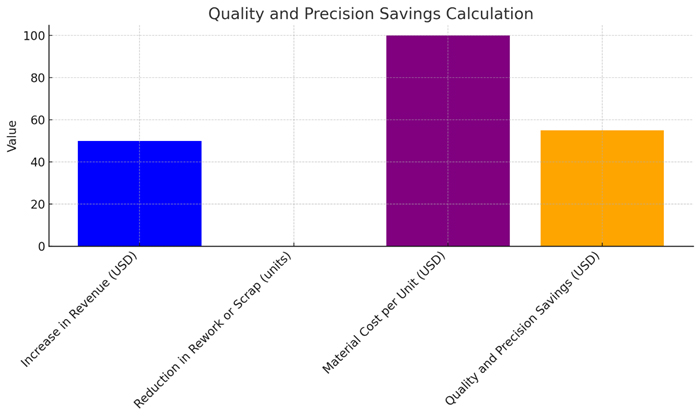
Here is the chart representing the Quality and Precision Savings calculation. It includes the increase in revenue, reduction in rework or scrap, material cost per unit, and the resulting quality and precision savings in USD
7. Speed-Related Savings
Description: Savings achieved by reducing operation time.
Equation: Speed related Savings = Reduction in Operation Time) × (Labor Cost per Hour)
Example:
Reduction in Operation Time = 6 minutes = 0.1 hours
Labor Cost per Hour = $50
Speed-Related Savings = 0.1 × 50 = $5

Chart representing the Force-Related Savings calculation. It displays the energy cost savings, maintenance cost reduction, and the resulting force-related savings in USD
8. Force-Related Savings
Description: Savings from reduced force requirements.
Equation: Force-Related Savings = (Energy Cost Savings) + (Maintenance Cost Reduction)
Example:
Energy Cost Savings = $10
Maintenance Cost Reduction = $20
Force-Related Savings = 10 + 20 = $30

Chart representing the Force-Related Savings calculation. It displays the energy cost savings, maintenance cost reduction, and the resulting force-related savings in USD
9. Dressing Frequency Savings
Description: Savings from reduced need to dress the drills.
Equation: Dressing Frequency Savings = (Reduction in Dressing Operations) × (Cost per Dressing)
Example: Reduction in Dressing Operations = 2 operations
Cost per Dressing = $0.50
Dressing Frequency Savings = 2 × 0.50 = $1
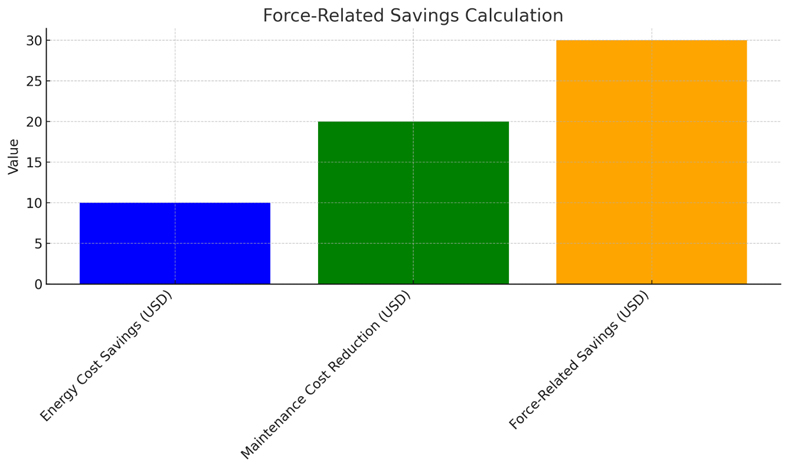
Chart representing the Dressing Frequency Savings calculation. It displays the reduction in dressing operations, cost per dressing, and the resulting dressing frequency savings in USD
10. Quality-Related Savings
Description: Savings from improved quality reducing rework.
Equation: Quality-Related Savings = (Reduction in Rework or Scrap) × ( Material Cost per Unit)
Example: Reduction in Rework or Scrap = 0.05 units
Material Cost per Unit = $100
Quality-Related Savings= 0.05 × $100 = $5
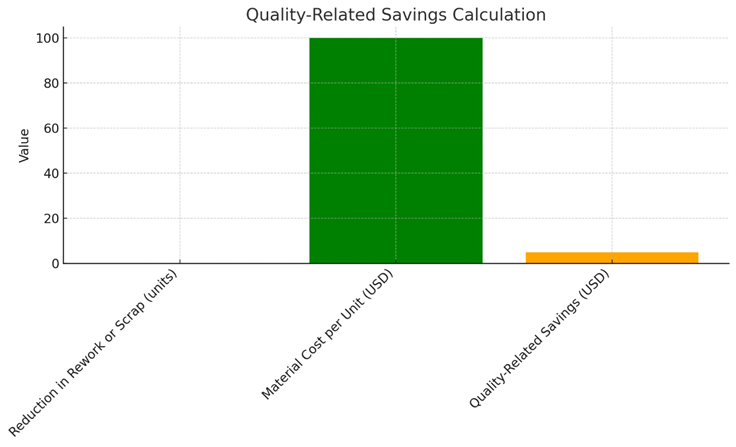
Chart representing the Quality-Related Savings calculation. It shows the reduction in rework or scrap, the material cost per unit, and the resulting quality-related savings in USD
11. Durability-Related Savings
Description: Savings from extended lifespan.
Equation: Durability Related Savings = (Extended Lifespan Savings) / (Average Lifespan Increase
Example:
Extended Lifespan Savings = $100
Average Lifespan Increase = 20%
Durability-Related Savings = 100 / 0.2 = $500
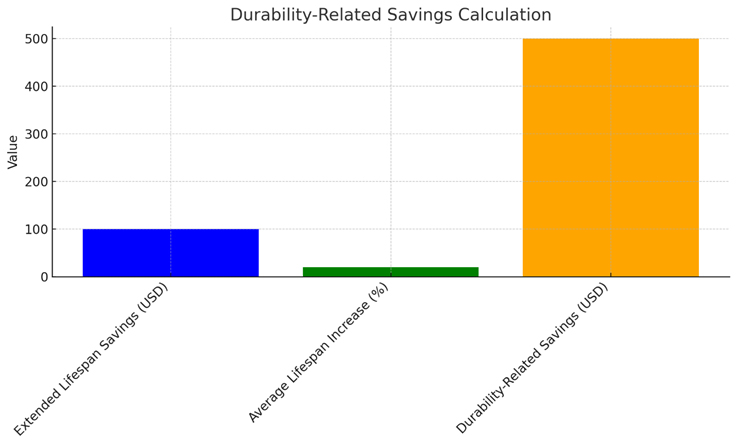
Chart representing the Durability-Related Savings calculation. It displays the extended lifespan savings, average lifespan increase percentage, and the resulting durability-related savings in USD
12. Consistency Savings
Description: Savings from reduced variability in quality.
Equation: Consistency Savings = (Reduction in Quality Variability Costs)
Example:
Reduction in Quality Variability Costs = $30
Consistency Savings = 30

Chart representing the Consistency Savings calculation. It displays the reduction in quality variability costs and the resulting consistency savings in USD
3. Sum Total Operational Savings
Add up all individual savings to determine the total operational savings generated by using diamond core drills.
Total Operational Savings = Waste Reduction Savings + Lower Maintenance Costs + Reduced Secondary Processes + Energy Efficiency and Speed + Performance Enhancements + Quality and Precision Improvements + Speed-Related Savings + Force-Related Savings + Dressing Frequency Savings + Quality-Related Savings + Durability -Related Savings + Consistency Savings
Total Operational Savings = $1,506.20
Total Operational Savings = $10 + $225 + $40 + $5.20 + $600 + $55 + $5 + $30 +$1 + $5 + $500 + $30 = $1,506.20
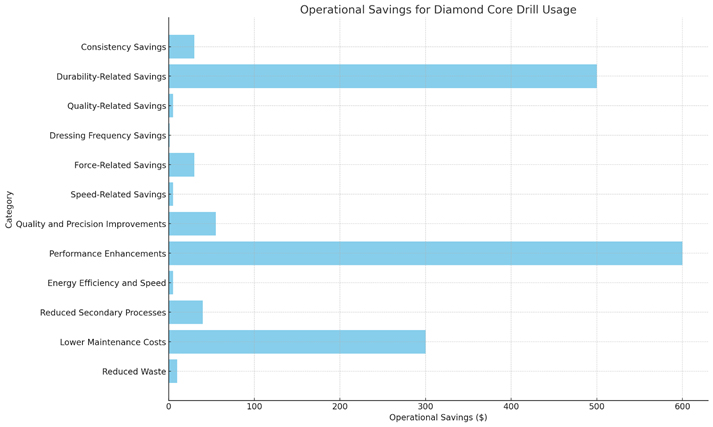
4. Calculate ROI
Determine the ROI by comparing the total operational savings against the initial investment to see how much net benefit the investment in diamond core drills has generated.
ROI (%) = (Total Operational Savings - Total Costs / Initial Investment) * 100




